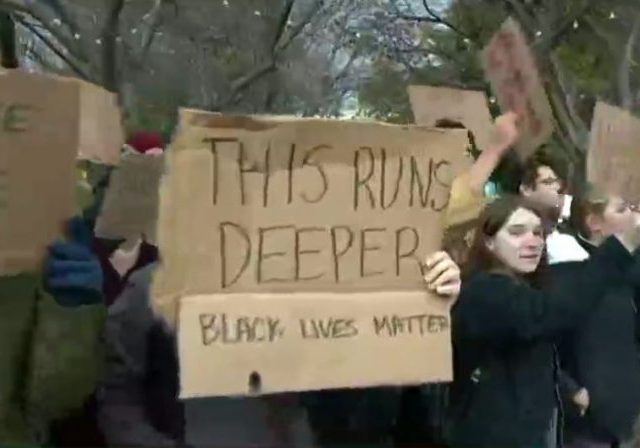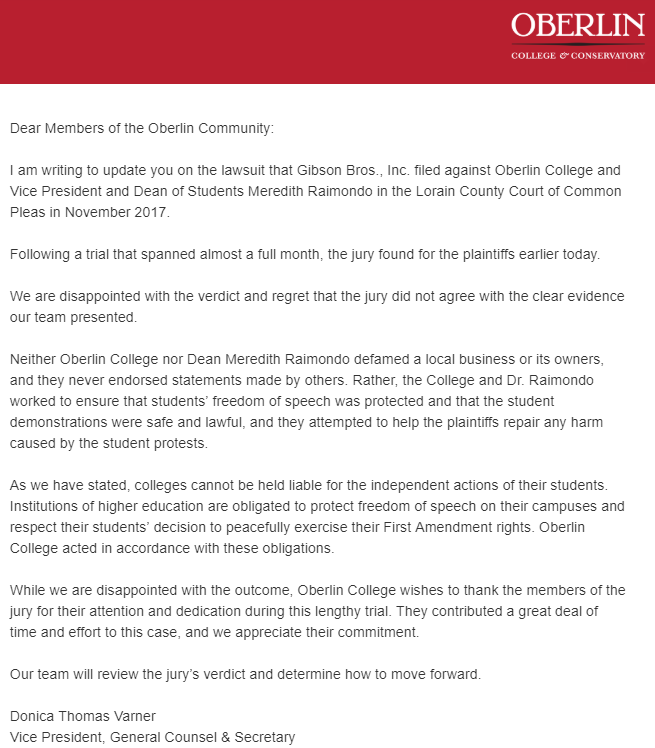The defense lawyers for Oberlin College filed a motion for a directed verdict, to keep the jury from considering all or part of plaintiffs’ claims. You can read the Motion for a Directed Verdict(pdf.) and Opposition (pdf.) at the bottom of this post. The motion papers contain extensive excerpts from the trial transcript and evidence each side believed helped its case.
Professor Jacobson explained the nature of a motion for directed verdict in a note to my post yesterday:
https://legalinsurrection.com/2019/...rected-verdict-denied-case-going-to-the-jury/
Professor Jacobson explained the nature of a motion for directed verdict in a note to my post yesterday:
The motions to be argued tomorrow are what are called motions for directed verdicts (some courts call them motions to dismiss at the close of the plaintiff’s case). The standard is that all factual inferences based on the evidence presented have to be drawn in favor of the plaintiffs; if after taking the facts and inferences in plaintiff’s favor the court finds that no reasonable jury could rule in plaintiffs’ favor under the applicable law governing the claims, then the claims would be dismissed. It’s not all or nothing, the court could dismiss some claims but not others. It is a legal standard similar to the pre-trial summary judgment standard, so it’s worth looking at the court’s legal rulings on summary judgment, which we covered here: Putting Social Justice Warfare on trial: Gibson’s Bakery lawsuit against Oberlin College heading to trial.
The difference is that while on summary judgment the plaintiff only needs to show that there are disputed issues of material fact, here the court will need to find that sufficient evidence was presented such that under applicable law a reasonable jury could find for plaintiffs….
https://legalinsurrection.com/2019/...rected-verdict-denied-case-going-to-the-jury/



